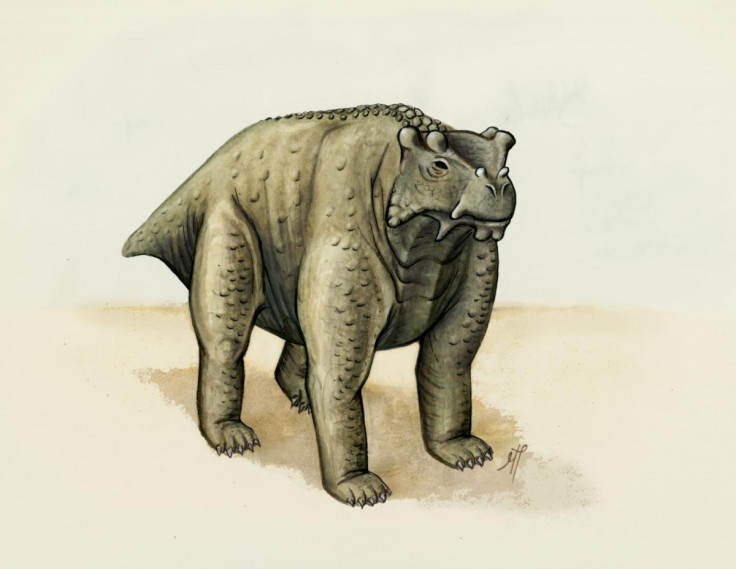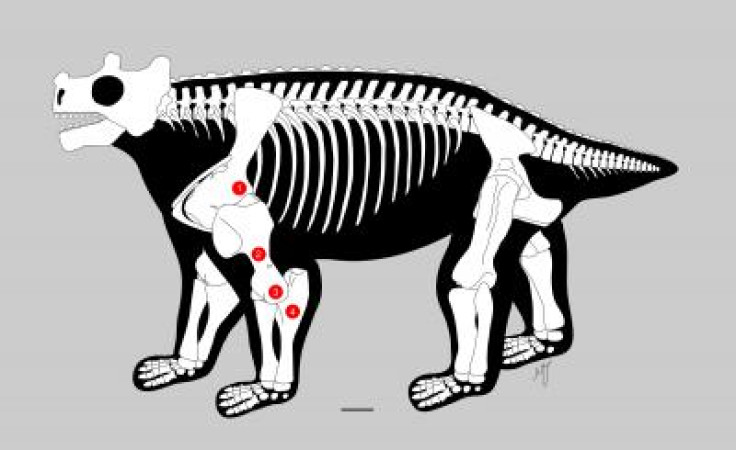First animal to walk upright on all fours discovered to be 260 million-year-old cow-sized reptile

Scientists have discovered what they believe to be the first reptile that was able to walk upright on all fours. The "cow-sized" reptile, dubbed Bunostegos akokanensis, roamed the Earth some 260 million years ago during the Permian era, and unlike other of its contemporaries, it didn't sprawl around on its stomach like most modern reptiles.
Although the discovery of the Bunostegos akokanensis is not new, with the fossils being found in Niger between 2003 and 2006, the bone analysis has shown an important step in the evolutionary process. Morgan Turner, lead author of the study published in the Journal of Vertebrate Paleontology, said: "A lot of the animals that lived around the time had a similar upright or semi-upright hind limb posture, but what's interesting and special about Bunostegos is the forelimb, in that its anatomy is sprawling-precluding and seemingly directed underneath its body-unlike anything else at the time. The elements and features within the forelimb bones won't allow a sprawling posture. That is unique."

The team state that the creature's shoulder joint was facing down, meaning that the humerus was located directly beneath its body. Additionally, the humerus of the Bunostegos was not twisted like it is in a "sprawler", suggesting that the elbow and shoulder needed to be aligned to have its feet on the floor. Furthermore, the ulna is longer that the humerus – a common characteristic in non-sprawlers.
Describing the animal, co-author Linda Tsuji, of the Royal Ontario Museum, said: "Imagine a cow-sized, plant-eating reptile with a knobby skull and bony armour down its back."
However, Turner added that she would not be surprised if other animals who lived at the same time were found to have walked upright on all fours. "Posture, from sprawling to upright, is not black or white, but instead is a gradient of forms," Turner said. "There are many complexities about the evolution of posture and locomotion we are working to better understand every day. The anatomy of Bunostegos is unexpected, illuminating, and tells us we still have much to learn."
© Copyright IBTimes 2024. All rights reserved.






